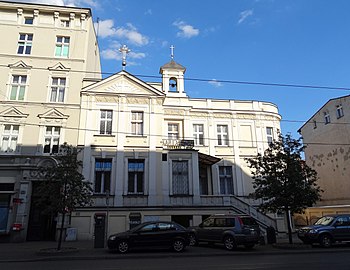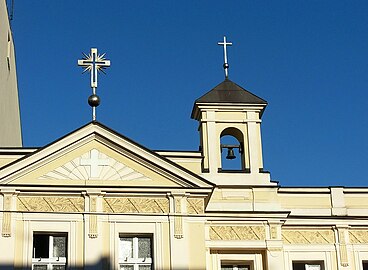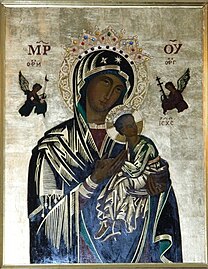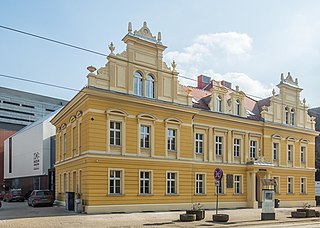
The District Museum Building in Bydgoszcz is an historical building in Bydgoszcz located at 4 Gdańska Street.

Emil Bernhardt House is a tenement located at 16 Gdańska Street, in Bydgoszcz, Poland.

The Julius Grey house is a historical building in downtown Bydgoszcz, at 35 Gdańska Street.

The Theonia Reichhardt house is a tenement in downtown Bydgoszcz, at 36 Gdańska Street.
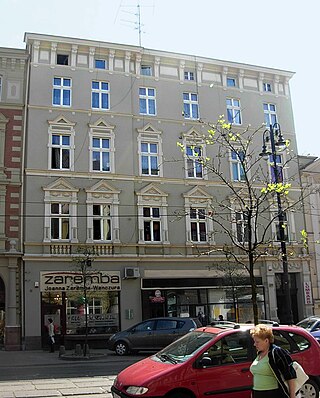
The Aleksander Olszyński Tenement is a habitation house built in the late 19th century from a design by architect Heinrich Arndt in Bydgoszcz, Poland, and located at 58 Gdańska Street.

Gdańska Street is one of the main streets of downtown Bydgoszcz, Poland. Initially, the street was a thoroughfare, but in the second half of the 19th century, it turned residential. It ran from the Brda river to Bydgoszcz northern part of town and has gradually become the city center of trade and entertainment. During the interwar period, Gdańska street was the third longest street in Bydgoszcz with a total length of 3.19 km.

The Carl Bradtke Tenement is a historical habitation building located at 93 Gdańska Street, in Bydgoszcz, Poland It is registered on the Kuyavian-Pomeranian Voivodeship Heritage list.

The Stanisław Rolbieski tenement is a historical habitation building located at 96 Gdańska Street, in Bydgoszcz.

The Carl Peschel tenement is a historical habitation building in Bydgoszcz, Poland. It is registered on the Kuyavian-Pomeranian Voivodeship Heritage List.

Theatre Square is a large and historical place in downtown Bydgoszcz. On its borders stand many buildings registered on the Kuyavian-Pomeranian Voivodeship Heritage List.
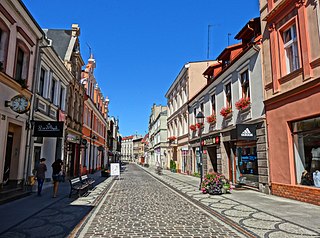
Długa Street is the longest street of Old Town district in Bydgoszcz and the most important historically. It stands next to Gdańska Street and Dworcowa Street as one of the most important avenues of downtown Bydgoszcz.

Pomorska Street is an important street in downtown Bydgoszcz.

Stanisław Konarski street is a historical street of downtown Bydgoszcz.

Bydgoszcz displays an abundant variety of architectures, with styles from neo-gothic, neo-baroque and neoclassicism, to Art Nouveau and modernism; hence its nickname of Little Berlin at the start of the 20th century. The notable granaries on Mill Island and along Brda river also recall a recognized timber-framed characteristics of the city in Poland.

20 Stycznia 1920 Street is located in downtown district, in Bydgoszcz, Poland. Many of the buildings along this axis are either registered on the Kuyavian-Pomeranian Voivodeship heritage list, or part of a historical ensemble of Eclectic and Art Nouveau architecture in the city.

Obrońców Bydgoszczy street is located in downtown district, in Bydgoszcz, Poland. Many of the buildings along this axis are either registered on the Kuyavian-Pomeranian Voivodeship heritage list, or part of a historical ensemble of Eclectic and Art Nouveau architecture in the city.

Jana Zamoyskiego Street is located in downtown district, in Bydgoszcz, Poland. Most of its buildings display Eclectic, Art Nouveau or early modernist architectural styles. One of them is registered on the Kuyavian-Pomeranian Voivodeship heritage list.

Chodkiewicza street is one of the most important arteries of Bydgoszcz centre, enabling to cross the city on an east-west axis. Many buildings along this axis undeniably carry historic importance, some are registered on the Kuyavian-Pomeranian Voivodeship Heritage list.
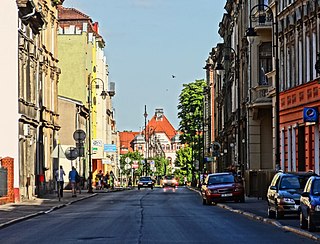
Świętojańska Street is an historical avenue in downtown Bydgoszcz. Its frontages display various architectural features. A couple of them are listed on the Kuyavian-Pomeranian Voivodeship heritage list.

Chocimska Street is a historical street of downtown Bydgoszcz, Poland.


